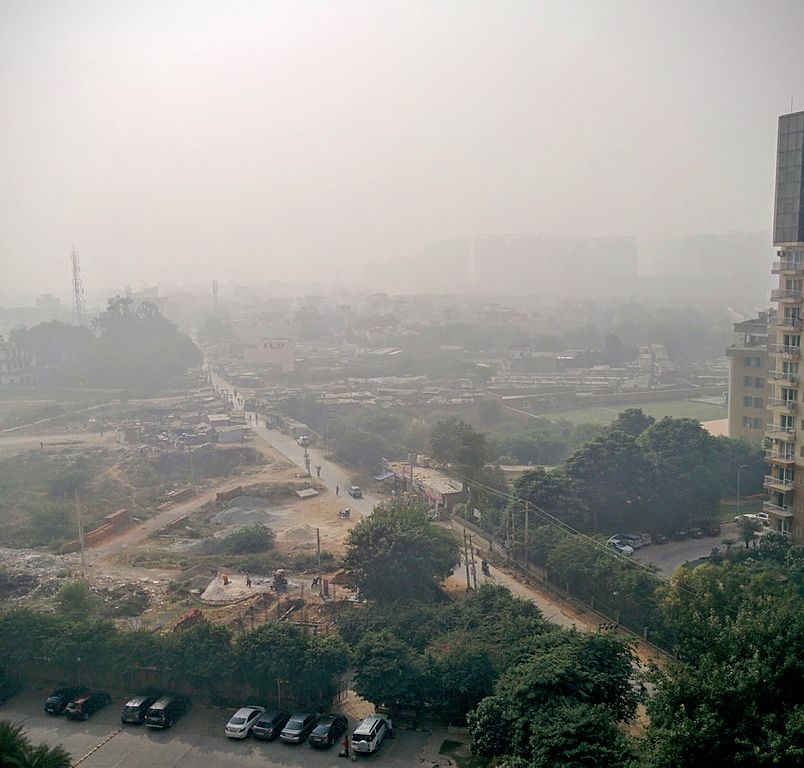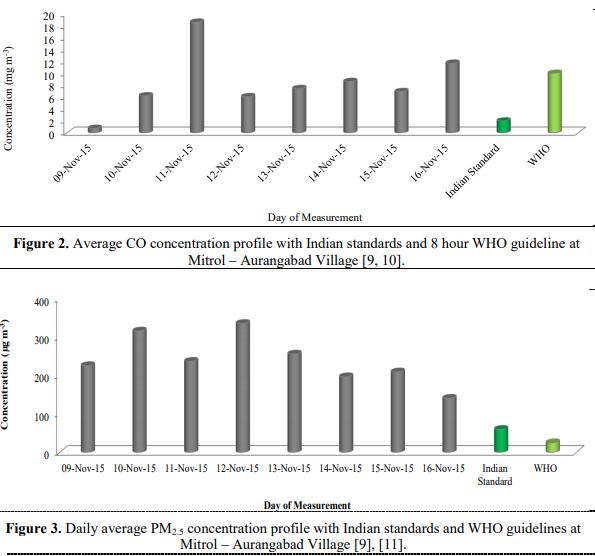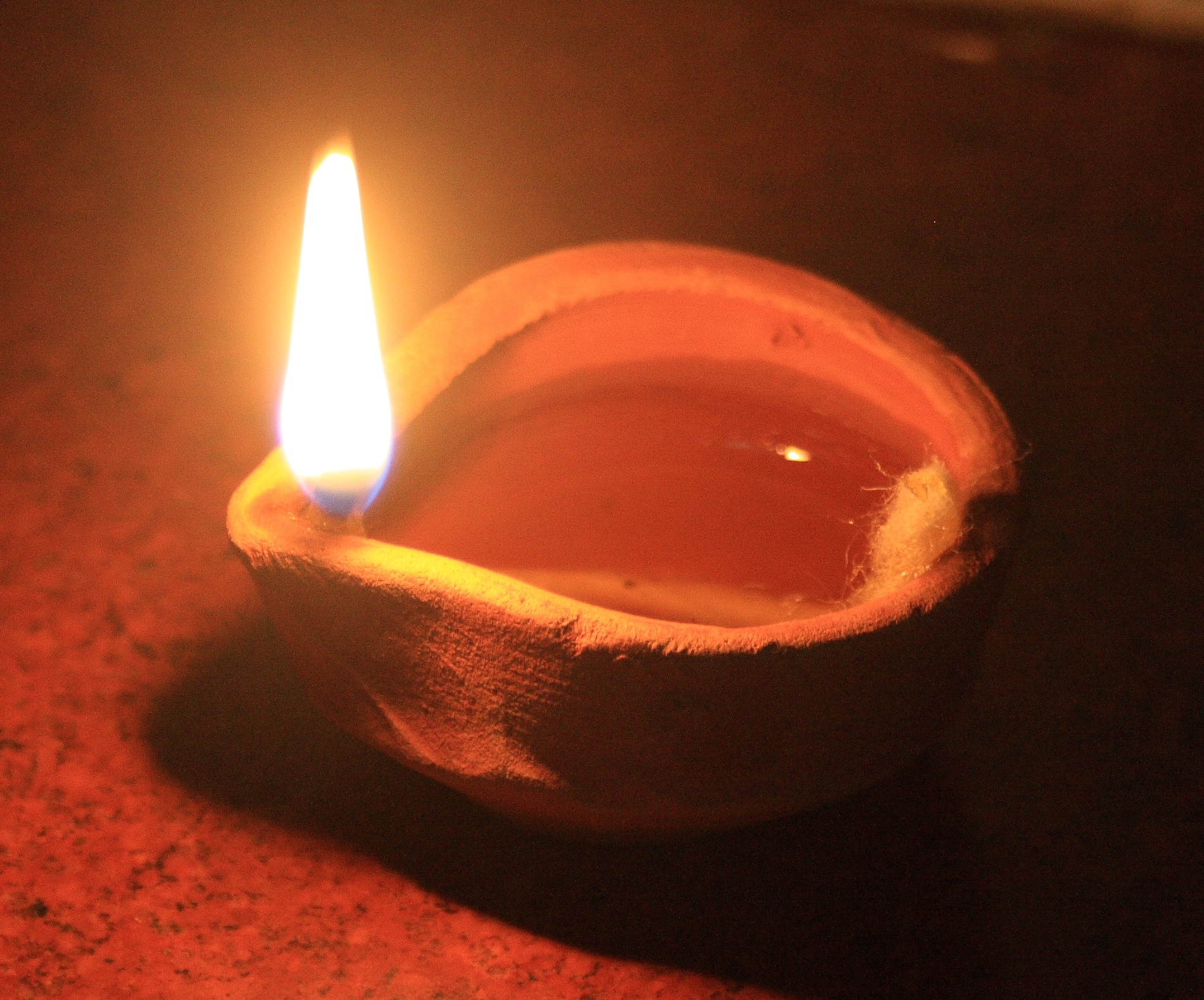- In 2015, researchers observed a fall in air quality during the festival of Diwali in a rural village in Haryana as seen by soaring levels of PM2.5 and carbon monoxide. This study corroborates the link between fireworks and increase in air pollution intensity, even in a rural environment.
- The team recommends setting off firecrackers far away from homes to facilitate the dispersion of the pollutants generated.
- More detailed studies over multiple years as well as in other rural areas are needed, taking into account the prevailing wind conditions to gain a better understanding of how firecrackers affect air quality, experts say.
Residents in metropolitan cities such as Delhi have been concerned about the health hazards associated with a rise in air pollution due to the bursting of firecrackers during Diwali (known as Deepavali in southern India), the festival of lights. But it’s not just city dwellers that are affected; according to a study published earlier this year. An area in rural Haryana suffers from a drop in air quality during Diwali with high levels of carbon monoxide and fine particulate matter smaller than 2.5 microns in size, known widely as PM2.5, particularly various metal ions.
Exposure to elevated levels of air pollutants during Diwali “can increase the potential for acute health effects, suggesting need for guidance in rural areas on ways to ensure that the most vulnerable populations are able to avoid additional exposure or rapidly seek treatment if needed,” said Sneha Gautam, head of the Department of Environmental Science and Engineering at Marwadi University and lead author of the study. What’s more, the air is stagnant during this time in northern India preventing the dispersion of pollutants.

While most studies have focused on the impact of Diwali firecrackers on PM2.5 in urban areas, this is one of the first to assess the short-term effects in a rural setting. In fact, “all of the air quality monitoring stations are operated in urban areas; no such stations are being operated in rural areas,” Gautam pointed out. As more than two-thirds of India’s population live in rural areas, these findings are of concern, warranting the controlled use of firecrackers.
Gautam’s team measured the levels of PM2.5 and carbon monoxide in the air for a total of eight days centered on Diwali — two days prior to the festival, during Diwali day, and five days post-Diwali — in the villages of Mitrol-Aurangabad in the Palwal district of the state of Haryana.
The sampling sites were about 1 km away from roads with heavy traffic and 5 km away from industrial sources of pollution. As firecrackers can release a cocktail of compounds and metal ions into the air when burnt, the researchers also measured the concentrations of ammonium, sulphate and various metal ions that comprise PM2.5.
Spike in pollutants
They found that on the day before Diwali and after, PM2.5 concentrations were particularly high. On the eve of Diwali, people generally celebrate with firecrackers and on the day following Diwali, another festival known as “Govardhan puja” is celebrated by farmers, with firecrackers, said the researchers, which might explain the elevated concentrations. From the second day onwards after Diwali, PM2.5 concentrations dropped steadily.
On Diwali day, the average maximum concentration was 296 micrograms per cubic metre—five times higher than Indian National Ambient Air Quality Standards and 12 times higher than the World Health Organization’s (WHO) 24-hour standards. And compared to a normal day (non-festival day), the average PM2.5 concentration was 2.1 times higher on the day of Diwali.

Carbon monoxide concentrations, a gas produced during incomplete combustion, on the day of Diwali shot up considerably compared to the previous days reaching almost 7.5 times higher than Indian standards and 1.5 times higher than the WHO’s 8-hour standards. The researchers believe this may be due to a higher use of solid fuels to cook sweet Diwali delicacies.
But the 24-hour average concentration of PM2.5 and 8-hour average concentration of carbon monoxide pre and post-Diwali were comparable to the levels on a normal day. In fact, the researchers noted that even on non-festival days, PM2.5 levels were higher than expected, which they say warrants further investigation.
They observed that the concentrations of sulphate (SO4), potassium, azide (N3), aluminium and sodium ions were around two to five times higher during the festival days of Diwali than on a normal, non-festival day in November. Overall, metal ion concentrations were highest on Diwali day, followed by post-Diwali, pre-Diwali and normal days indicating the role of fireworks on the deteriorating air quality post-Diwali.
“Based on this observation it is concluded that if personal exposure to these pollutants increases, then metabolic activities may change and lead to severe diseases, viz., asthma, rhinitis, tuberculosis,” said Gautam.
In order to increase the dispersion of pollutants emitted from firecrackers, the researchers suggest burning crackers on an open, flat ground that is situated far away from homes. They also propose using plastic crackers with sound but without the need for burning.
Considering other sources of pollution and more data needed
“This study is in line with growing evidence of an increase in air pollution during Diwali,” said Sagnik Dey, associate professor of the Centre for Atmospheric Sciences at the Indian Institute of Technology, Delhi. “While there is no doubt that pollution has increased during Diwali days (from the data presented), the percentage increase in pollution level (as discussed in the paper) may not be representative of the region as it is based on one-year data. Similar measurements over multiple years would provide a better context in view of changing background concentration.”
Also, “we need to remember that Diwali is a one to three day event where additional emissions are added to the existing background pollution level,” he points out. “While in a stable atmosphere with high background level, this additional contribution may elevate pollution level disproportionately, studies should be carried out in cleaner places where background level is much lower and the atmosphere is not stable,” he elaborated.
In order to get a clearer picture of how the pollution builds up, data on hourly variations on the levels of PM2.5 will be useful, Dey added. Because “firecrackers are potential polluters,” he calls for the development of an emissions inventory of firecrackers at a regional scale.
Ramesh Singh, a professor at Chapman University in California, USA, has some concerns about the study. Along with Dey, he published one of the earliest studies in 2003 detailing the changes in the behaviour of aerosols during Diwali in the city of Kanpur in Uttar Pradesh.

First, he suspects that pollutants from surrounding areas may be playing a role in the spikes seen in this study. During October-November every year, farmers in the northern states burn residues of rice harvested. Westerly winds, he explains, may transport the pollutants from Punjab down to Haryana. He notes that in 2016, “crop burning coincided with Diwali festival” and as a result “dense haze, fog and smog were observed in the first week of November 2016.”
Second, he said that the bursting of firecrackers occurs primarily in urban areas rather than in rural areas. “In villages, people don’t play with firecrackers,” said Singh, who originally hails from a village in Uttar Pradesh. “In urban areas, people play with fireworks up to midnight” but in rural areas “they eat early and sleep early.” Also, since farmers may store crop residues in their homes, playing with firecrackers could even pose a threat to their homes, he added.

CITATION:
Gautam, S., Yadav, A., Pillarisetti, A., Smith, K., Arora, N. (2018). Short-Term Introduction of Air Pollutants from Fireworks During Diwali in Rural Palwal, Haryana, India: A Case Study. IOP Conf. Ser.: Earth Environ. Sci., 120 012009. doi.org/10.1088/1755-1315/120/1/012009.
Banner image: Fireworks on Diwali. Photo by Saad Faruque/ Wikimedia Commons.
